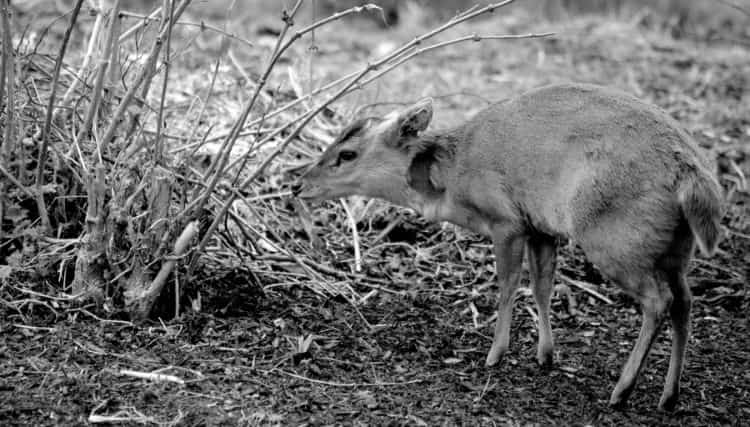
What is Pygmy Brocket?
The Pygmy Brocket, also known as the Dwarf Brocket, is a small species of deer that belongs to the genus Mazama. Its scientific name is Mazama Nana. It is found in parts of South America, including Ecuador, Peru, Bolivia, and Brazil.
As its name suggests, the Pygmy Brocket is one of the smallest deer species, with adults typically reaching a height of about 50 centimeters (20 inches) at the shoulder. They have a compact build and short legs. The coat of the Pygmy Brocket varies in color, but it usually consists of shades of brown or gray.
These deer primarily inhabit tropical rainforests and dense vegetation, where they are well adapted for maneuvering through the undergrowth. They are herbivorous, feeding on a variety of plant materials, including leaves, fruits, and flowers.
Pygmy Brockets are typically solitary animals and are most active during the twilight hours, although their precise behavior and habits may vary across their range. They are generally secretive and elusive, which makes them difficult to study in the wild.
Due to their small size and limited distribution, the Pygmy Brocket is not as well-known or studied as some other deer species. However, they play an important ecological role within their habitats and contribute to the biodiversity of the region.
Habitat For Pygmy Brocket
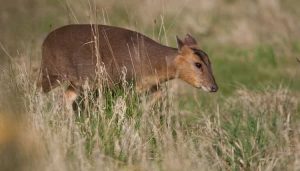
The Pygmy Brocket is primarily found in the tropical rainforests and dense vegetation of South America. They inhabit various countries including Ecuador, Peru, Bolivia, and Brazil. Within these regions, they prefer habitats with dense vegetation, such as lowland rainforests, montane forests, and cloud forests.
Pygmy Brockets are well adapted to navigating through undergrowth and dense vegetation due to their small size and agility. They are capable of maneuvering through thick vegetation, which provides them with cover and protection from predators. These deer are often found in areas with a mixture of trees, shrubs, and dense ground-level vegetation.
Their habitat preference also extends to areas with a consistent water source nearby, such as rivers, streams, or ponds. They may venture closer to water sources for drinking or feeding on aquatic plants.
Overall, the Pygmy Brocket is associated with forested habitats, utilizing the cover and resources provided by tropical rainforests and other dense vegetation environments.
What is The Physical Description Of Pygmy Brocket?
The Pygmy Brocket (Mazama nana) is a small deer species with distinct physical features. Here are some notable characteristics of the Pygmy Brocket:
-
Size: As mentioned earlier, the Pygmy Brocket is one of the smallest deer species. Adults typically reach a height of about 50 centimeters (20 inches) at the shoulder.
-
Body Shape: They have a compact and stocky body shape, which helps them maneuver through dense vegetation. Their body proportions are adapted for navigating the undergrowth of their habitat.
-
Coat Color: The coloration of Pygmy Brocket’s coat can vary, but it usually consists of shades of brown or gray. The coloration may help camouflage them within their forested habitats.
-
Fur: Their fur is dense and coarse, providing insulation and protection. The fur can vary in color and pattern, including solid colors or speckling.
-
Antlers: Unlike many other deer species, female Pygmy Brockets do not have antlers. Males, on the other hand, typically have small, simple antlers. The antlers are usually short and straight with a few points.
-
Facial Features: They have a short and rounded head, with large, dark eyes and small, rounded ears. Their snout is also short, and they possess a small black nose.
-
Tail: The Pygmy Brocket has a short tail that is typically hidden within its fur. It is not highly visible compared to the long tails of some other deer species.
It’s important to note that these physical characteristics can vary slightly among individuals and populations, and there may be regional differences as well.
Pygmy Brocket Reproduction -Breeding
Pygmy Brockets, like other deer species, reproduce sexually. Here is an overview of the breeding and reproductive behavior of Pygmy Brockets:
-
Breeding Season: Pygmy Brockets do not have a strictly defined breeding season. Instead, they can breed throughout the year, although there may be peaks in activity during certain periods. Breeding activity can be influenced by factors such as food availability, climate, and social dynamics.
-
Mating Behavior: During the breeding season, males may engage in behaviors to attract females and establish dominance. This can include vocalizations, marking their territory with scent, and engaging in physical sparring with other males.
-
Courtship: Once a male successfully attracts a female, courtship behavior begins. This may involve the male following the female, making various displays, and engaging in gentle nudging or licking.
-
Gestation: After successful mating, the female Pygmy Brocket undergoes a gestation period, which lasts around 6 to 7 months. This is the period during which the fertilized egg develops within the female’s womb.
-
Birth and Offspring: Female Pygmy Brockets usually give birth to a single offspring, known as a fawn. The birth typically takes place in a secluded area with cover, protecting the newborn. The fawn is born with a spotted coat that helps it blend into its surroundings.
-
Maternal Care: The mother takes care of the fawn, nursing it and providing protection during its early stages of life. The fawn remains hidden for the first few weeks of its life, and the mother visits it periodically to nurse and groom it.
-
Weaning and Independence: After a few months, the fawn gradually starts to eat solid food and becomes more independent. Eventually, it separates from its mother and establishes its territory.
It’s worth noting that specific details about Pygmy Brocket breeding behavior and reproductive biology may vary across their range and can be influenced by environmental factors.
How Long Does A Pygmy Brocket Live?
The lifespan of Pygmy Brockets in the wild is not extensively documented, but it is estimated that they typically live for about 8 to 10 years. However, it’s important to note that individual lifespans can be influenced by various factors, including predation, habitat quality, availability of resources, and diseases.
In captivity, where Pygmy Brockets are protected and provided with suitable conditions, their lifespan can be longer. Under such circumstances, they may live up to 12 to 15 years or even slightly more.
Communication And Perception
Pygmy Brockets, like many deer species, utilize various forms of communication and have keen sensory perception. Here are some aspects of their communication and perception:
-
Vocalizations: Pygmy Brockets communicate using a range of vocalizations, including grunts, snorts, and whistles. These vocal signals can serve purposes such as indicating alarm, aggression, or attracting mates.
-
Scent Marking: Pygmy Brockets have scent glands, particularly around their hind legs and hooves, which they use to mark their territory. By rubbing their scent onto objects in their environment, they communicate their presence to other individuals and signal ownership of a particular area.
-
Visual Signals: Visual communication among Pygmy Brockets is primarily conveyed through body language and postures. They may display behaviors like raising their tail, laying their ears back, or arching their back as signals of aggression or submission.
-
Tactile Communication: Physical contact and tactile interactions are important in social bonding and communication among Pygmy Brockets. This can include grooming behaviors, nuzzling, or gentle nudges.
-
Sensory Perception: Pygmy Brockets have well-developed senses that help them navigate their environment and detect potential threats. Their sense of hearing is acute, allowing them to detect sounds and calls from other animals. They also have a keen sense of smell, which helps them locate food, identify potential mates, and sense predators. Their eyesight is adapted for low-light conditions, aiding in their crepuscular activity patterns.
-
Infrasound Communication: Some deer species, including Pygmy Brockets, are capable of producing infrasound, which is sound below the range of human hearing. Infrasound can travel long distances through vegetation and is believed to be used by deer for long-distance communication, especially during the mating season.
These communication and perception mechanisms play crucial roles in various aspects of the Pygmy Brocket’s life, including social interactions, reproduction, and predator avoidance.
What Does Pygmy Brocket Eat?
Pygmy Brockets are herbivorous animals, meaning they primarily feed on plant materials. Their diet consists of a variety of vegetation found in their forested habitats. Here are some key aspects of Pygmy Brocket’s diet:
-
Leaves: Pygmy Brockets consume a range of leaves from various plant species. They feed on both young, tender leaves as well as mature leaves, depending on their availability.
-
Fruits: They also feed on fruits, including fallen fruits or those found on low-lying branches. Fruits provide them with important nutrients and energy.
-
Flowers: Pygmy Brockets have been observed feeding on flowers, especially during the flowering season. Flowers can be a seasonal food source for them.
-
Twigs and Buds: They may browse twigs and consume buds from certain plants as part of their diet.
-
Moss and Lichens: In some cases, Pygmy Brockets have been observed feeding on moss and lichens found on tree trunks or other surfaces. These can provide additional nutrients and serve as a food source during times when other vegetation is scarce.
The specific plant species consumed by Pygmy Brockets can vary based on the availability and abundance of vegetation in their habitat. They are opportunistic feeders and will consume a variety of plant materials to meet their nutritional needs. Their diet is adapted to the plant resources found in the tropical rainforests and dense vegetation where they reside.
Pygmy Brocket Anti-predator Adaptations
Pygmy Brockets have developed several anti-predator adaptations that help them survive and avoid predation. These adaptations help them detect predators, evade capture, and increase their chances of survival. Here are some of their anti-predator adaptations:
-
Camouflage: The Pygmy Brocket’s coat coloration, often consisting of shades of brown or gray, helps them blend into their forested surroundings. This natural camouflage makes it harder for predators to spot them among the vegetation, providing a measure of protection.
-
Alertness and Vigilance: Pygmy Brockets are alert and have well-developed senses. They are often vigilant, constantly scanning their surroundings for potential threats. Their acute hearing and keen eyesight help them detect the presence of predators at a distance, allowing them to react quickly and evade danger.
-
Agility and Speed: Pygmy Brockets possess agility and are capable of quick, evasive movements. When faced with a predator, they can swiftly navigate through dense vegetation, using their compact body size and nimble legs to their advantage. They can change directions rapidly and leap over obstacles, making it difficult for predators to catch them.
-
Alarm Calls: Pygmy Brockets have various vocalizations, including alarm calls, to alert nearby individuals of potential danger. These calls can signal the presence of predators, enabling other members of the group or nearby individuals to take evasive action.
-
Concealment and Hiding: When threatened, Pygmy Brockets seek cover and hide in dense vegetation or use their camouflage to remain hidden. They can remain motionless and rely on their coloration and blending abilities to minimize the chances of being detected by predators.
-
Group Living: Pygmy Brockets sometimes form small groups or pairs, which can enhance their collective defense against predators. Living in groups allows for increased vigilance and the sharing of information about potential threats.
It’s important to note that while these adaptations increase their chances of survival, they are not foolproof, and Pygmy Brockets can still fall prey to skilled predators in their environment.
What is Pygmy Brocket Role İn The Ecosystem?
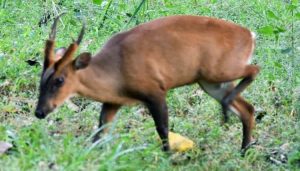
The Pygmy Brocket plays an important role in the ecosystem in which it resides. Here are some of how Pygmy Brockets contribute to their ecosystem:
-
Seed Dispersal: Pygmy Brockets consume fruits as part of their diet. As they move through their habitat and feed on fruits, they play a role in seed dispersal. They consume fruits and later excrete the undigested seeds in different locations, aiding in the dispersal and distribution of plant species throughout the forest. This helps promote the regeneration and diversity of plant populations.
-
Herbivory and Plant Control: Pygmy Brockets are herbivores and feed on vegetation, including leaves, twigs, and buds. Their browsing behavior can influence the growth and dynamics of plant populations within their habitat. By consuming plant material, they can help control the growth of certain plant species, maintain a balance between plant communities, and prevent any single species from dominating an area.
-
Prey for Predators: Pygmy Brockets serve as a source of prey for various predators within their ecosystem. Predators such as large cats (jaguars, pumas), canids, and birds of prey may rely on Pygmy Brockets as a food source. Their presence and availability as prey contributes to the ecological interactions and energy flow within the ecosystem.
-
Nutrient Cycling: As Pygmy Brockets consume plant material, they extract nutrients from the vegetation. When they excrete waste, it contributes to the nutrient-cycling process within the ecosystem. Their excretions can serve as fertilizers for plants, aiding in nutrient distribution and recycling.
-
Indicator of Ecosystem Health: The presence and abundance of Pygmy Brockets can serve as an indicator of the overall health and integrity of the ecosystem. Their population dynamics and behavior can provide insights into the ecological balance, habitat quality, and impacts of human activities within their range.
Overall, the Pygmy Brocket, as a herbivorous mammal, participates in various ecological processes, including seed dispersal, herbivory, prey-predator relationships, and nutrient cycling. Its presence contributes to the functioning and resilience of the ecosystem it inhabits.
Conservation Status
The conservation status of the Pygmy Brocket (Mazama nana) is not specifically assessed by the International Union for Conservation of Nature (IUCN) as an individual species. Instead, it is often evaluated collectively with other brocket deer species within the genus Mazama.
Several brocket deer species, including those that overlap in range with the Pygmy Brocket, have been listed with varying conservation statuses. Some brocket deer species are classified as Least Concern, while others, such as the Amazonian Brown Brocket (Mazama nemorivaga), are categorized as Near Threatened.
The overall conservation status of the Pygmy Brocket and other brocket deer species can be influenced by factors such as habitat loss and degradation due to deforestation, hunting for meat and sport, and fragmentation of their forested habitats.
It is important to note that the conservation status of specific populations and subpopulations of Pygmy Brockets can vary based on local conditions and threats. Further research and assessment are needed to provide a more comprehensive understanding of the conservation status of the Pygmy Brocket and its distinct populations.
How Fast Can A Pygmy Brocket Run?
The Pygmy Brocket (Mazama nana) is known for its agility and speed, which help it evade predators and navigate through dense vegetation. While specific data on the maximum running speed of Pygmy Brockets is limited, it is estimated that they can reach speeds of up to 35 to 40 miles per hour (56 to 64 kilometers per hour) in short bursts when escaping from predators or during moments of high alertness.
It’s important to note that the actual running speed of individual Pygmy Brockets can vary, and factors such as terrain, vegetation density, and the presence of obstacles may influence their ability to reach and sustain top speeds. Additionally, as small-bodied deer, they may have an advantage in maneuverability and quick changes of direction rather than achieving long-distance sprints.
Referans: Epizootic Hemorrhagic Disease in Brocket Deer, Brazil
Where do Pygmy Kariyaku Deer sleep?
Pygmy Kariyaku Deer sleep in hollows, under fallen trees, or on raised beds made out of logs or leaves.
What plants do Pygmy Kariyaku Deer avoid?
Many plant species are avoided by the majority of animals but not by Pygmy Kariyaku Deer. Some plants include:
The Devil’s Walkingstick (Aspidium Canescens)
Vine (Vitis Vinifera)
Can Pygmy Kariyaku Deer swim?
Pygmy Kariyaku Deer swim by using the force of their back legs to push themselves through the water. They can also use their long snout and bristles to float.
İs Pygmy Kariyaku Deer aggressive?
The answer to the question is: Pygmy Kariyaku Deer are not aggressive, but they will defend themselves if they feel threatened.
How high can Pygmy Kariyaku Deer jump?
Pygmy Kariyaku Deer is the smallest deer species and they can jump up to 6 ft. They can jump over fences, brush, and other tall plants with ease.
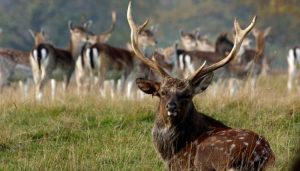
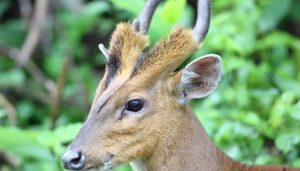
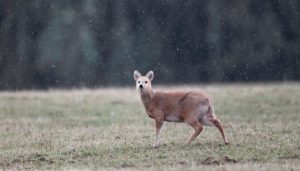
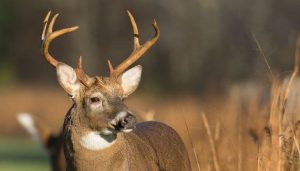
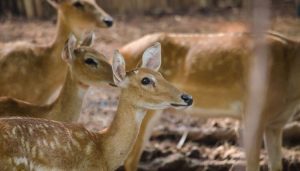
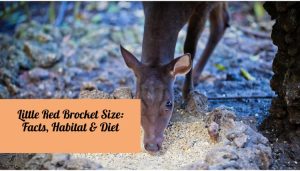
Comments (1)
Steve Ivessays:
April 5, 2023 at 3:11 pmIs it possible that kariyaku deer can be found in washington st?